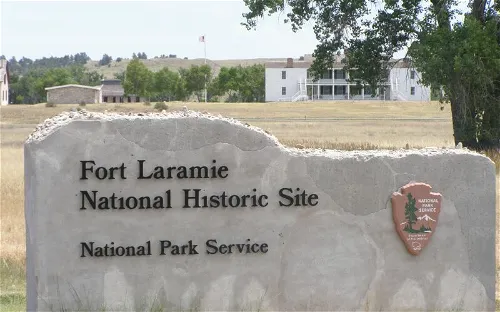Fort Laramie National Historic Site and its collection
Fort Laramie is historically significant for its association with two major treaties signed with prairie Native American tribes. The first treaty was signed in 1851 and the second in 1868. These treaties played a crucial role in shaping the relationship between the U.S. government and the Native American tribes during that period.
Fort Laramie as a National Historic Site
Fort Laramie and its surrounding areas, spanning 832.85 acres, have been designated as a National Historic Site. This recognition underscores the site's historical importance and its role in the westward expansion of the United States.
Museum and Restored Buildings at Fort Laramie
Visitors to Fort Laramie can gain a glimpse into the past through its museum and several restored buildings. These structures, complete with period-appropriate furniture, uniforms, and military equipment, offer a vivid depiction of life in the fort during its operational years.
History & Anthropology Historic house War Ethnology

